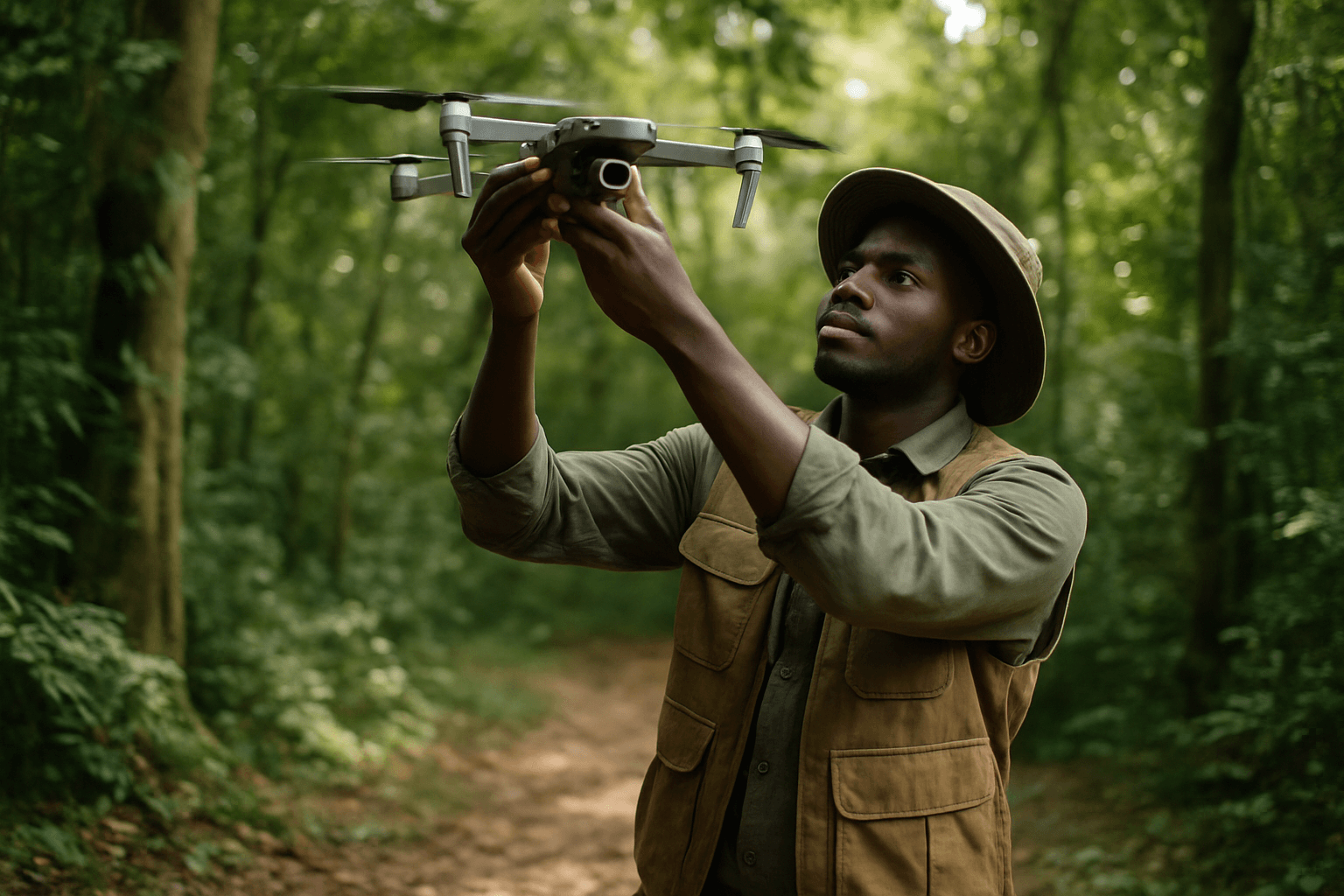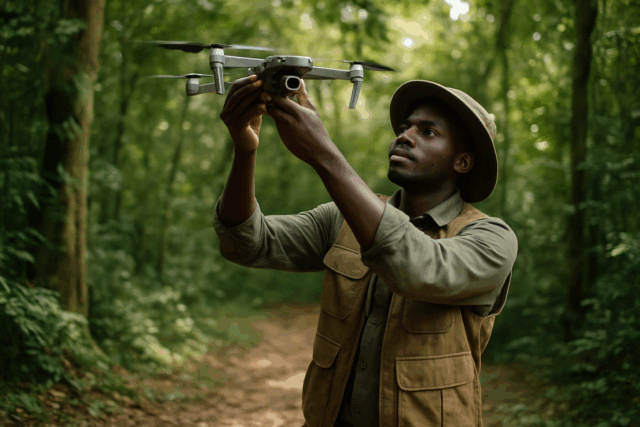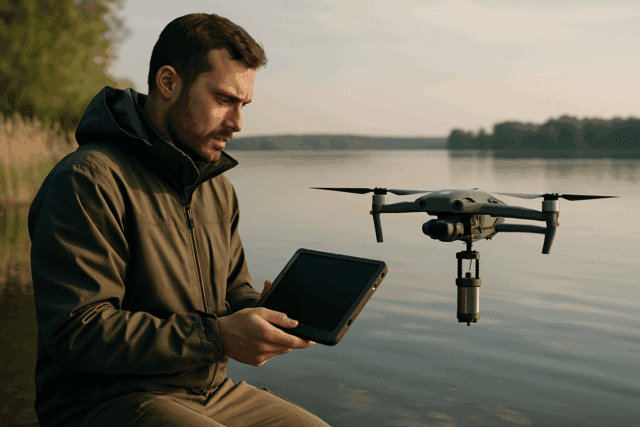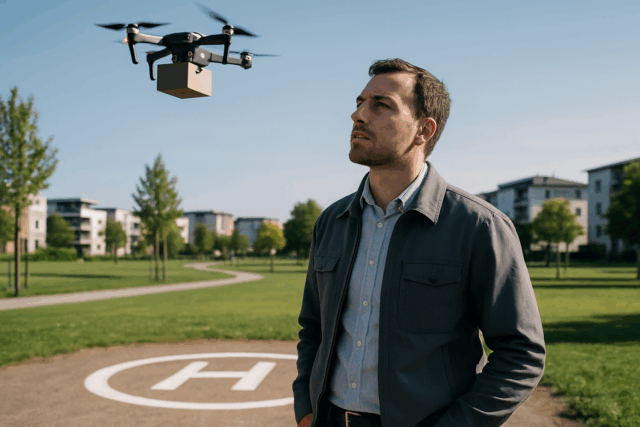The planet faces unprecedented environmental challenges, from rampant deforestation and escalating pollution to the relentless advance of climate change and threats to biodiversity. These issues not only degrade natural ecosystems but increasingly pose direct threats to human well-being, societal stability, and even national security. In response, a powerful technological alliance has emerged: remote sensing with Unmanned Aerial Vehicles (UAVs), commonly known as drones. These agile machines are revolutionizing how we monitor, protect, and secure our environment, offering a new frontier in ecological intelligence.
Understanding Environmental Security
Environmental security is a multidisciplinary concept that recognizes the profound link between the health of the environment and the stability and safety of human societies. It encompasses the protection of the environment and natural resources as a means to prevent conflicts and ensure the stability of societies. This includes addressing resource scarcities, environmental degradation, and biological threats that could lead to social disorder and conflict. Issues such as water scarcity, deforestation, and biodiversity loss are integral to environmental security, as they can trigger conflict and displacement. Ultimately, environmental security underpins sustainable livelihoods, health, and well-being for communities, making it essential for global stability.
The Power of Remote Sensing with Drones
Remote sensing involves acquiring information about objects or areas from a distance, typically using satellites, aircraft, or drones. Drones, however, have emerged as a game-changer due to their flexibility, affordability, and ability to capture high-resolution data from low altitudes, bridging the gap between field observations and traditional air- and space-borne remote sensing.
UAVs equipped with specialized sensors can collect a wealth of data across various environmental parameters. These payloads include:
- High-Resolution Cameras: Essential for capturing detailed images of wildlife, vegetation, and landscapes, enabling precise mapping and visual inspection.
- Thermal Imaging: Allows for the detection of wildlife, especially at night, identifying temperature variations, and spotting heat signatures from fires or hazardous waste.
- Multispectral and Hyperspectral Sensors: Used to assess vegetation health, water quality, land use patterns, and even detect specific materials in waste piles by analyzing different light wavelengths.
- LiDAR (Light Detection and Ranging): Provides detailed 3D mapping of the environment, aiding in forest management, vegetation analysis, terrain mapping, and volumetric surveys of landfills.
- Gas Detectors: Specialized sensors, such as tunable diode laser absorption spectrometers (TDLAS), can measure methane, CO₂, and volatile organic compounds (VOCs) with high sensitivity, crucial for monitoring industrial emissions and landfill gases.
These advanced sensor systems allow drones to provide rapid access to environmental data, offering near real-time capabilities required for many applications.
Key Drone Applications in Environmental Security
The versatility of drones has led to their widespread adoption across numerous environmental security challenges.
Combatting Deforestation and Land Degradation
Drones are invaluable for monitoring forests and tracking illegal logging, providing high-spatial-resolution imagery that helps assess vegetation status and land use changes. Their ability to cover vast areas efficiently allows for early detection of deforestation, enabling timely intervention and supporting sustainable forest management. UAVs can also be used in reforestation efforts, for example, by deploying seed pellets to combat desertification.
Wildlife Protection and Anti-Poaching Efforts
One of the most impactful applications is in wildlife conservation. Drones enable conservationists to safely monitor wildlife populations, track animal movements, and assess habitat health without disturbing the animals. Equipped with thermal sensors, drones are ideal for tracking endangered species in remote areas, even at night. Furthermore, drones with AI-driven image analysis can count animal populations with high accuracy and are crucial in anti-poaching efforts, detecting human and animal heat signatures and even distinguishing between wardens and poachers by analyzing behavior.
Pollution Monitoring and Environmental Crime Surveillance
Drones are transforming the monitoring of air and water quality. They can be used to assess water quality in rivers, lakes, and oceans, detecting pollutants and monitoring sewage discharge. For air quality, gas-sensing drones can measure pollutants like methane, CO₂, and VOCs around industrial facilities, pinpointing fugitive emissions with high precision. This capability is vital for enforcing environmental standards and identifying pollution sources.
Illegal Dumping and Waste Management
The problem of illegal dumping is a persistent environmental issue, often occurring in remote or inaccessible areas. Drones offer a cost-effective and efficient solution by scanning hard-to-reach zones like forests and riverbanks, capturing high-resolution imagery that serves as evidence for enforcement. They can also monitor landfills, providing detailed 3D maps to estimate remaining capacity, detect methane emissions through thermal imaging, and identify hazardous waste materials.
Disaster Management and Emergency Response
In the wake of natural disasters such as floods, wildfires, or hurricanes, drones play a critical role in rapid assessment of affected areas. They can quickly map damage, assess risks, and assist in planning recovery efforts, significantly accelerating response times and improving resource allocation.
Benefits of Drone-Based Remote Sensing for Environmental Security
The adoption of drones for environmental security brings a multitude of advantages:
- Enhanced Data Accuracy and Resolution: Drones provide high-resolution imagery and sensor data from precise vantage points, offering more detail than traditional methods.
- Access to Inaccessible Areas: They can reach hazardous or remote locations that are difficult or dangerous for human personnel, improving safety and expanding monitoring capabilities.
- Cost-Effectiveness and Efficiency: Drones offer a more cost-effective and time-efficient alternative to manned aircraft or extensive ground surveys, covering larger areas in less time.
- Real-time Monitoring: Live-feed capabilities provide immediate information, which is invaluable for rapid response in emergencies or for detecting ongoing illegal activities.
- Minimal Disturbance: Drones can monitor wildlife and sensitive ecosystems with minimal human presence, reducing disruption to natural behaviors.
- Data-Driven Decision Making: The rich, high-quality data collected informs better decision-making for environmental management, conservation strategies, and policy development.
Challenges and Future Outlook
Despite their immense potential, deploying drones for environmental security also presents challenges. These include regulatory hurdles, particularly for flying beyond visual line of sight (BVLOS), and managing the vast volumes of data generated by advanced sensors. The initial cost of advanced drone equipment and sophisticated data processing hardware can also be significant. Furthermore, issues such as data ownership, privacy concerns, airspace regulation, and the environmental footprint of drone production and operation (e.g., battery waste, energy consumption) need careful consideration. Data security is paramount, as intercepted or altered data could lead to flawed policies or compromised initiatives.
The future of remote sensing with drones in environmental security is promising. Continuous innovation in drone technology is making them more efficient, versatile, and autonomous. The integration of Artificial Intelligence (AI) and machine learning is rapidly advancing, enabling automated anomaly detection, faster data analysis, and more intelligent decision-making, such as identifying species or even predicting threats like poaching. As these technologies mature and regulatory frameworks evolve, drones will become an even more indispensable tool in safeguarding our planet and ensuring environmental security for generations to come.





